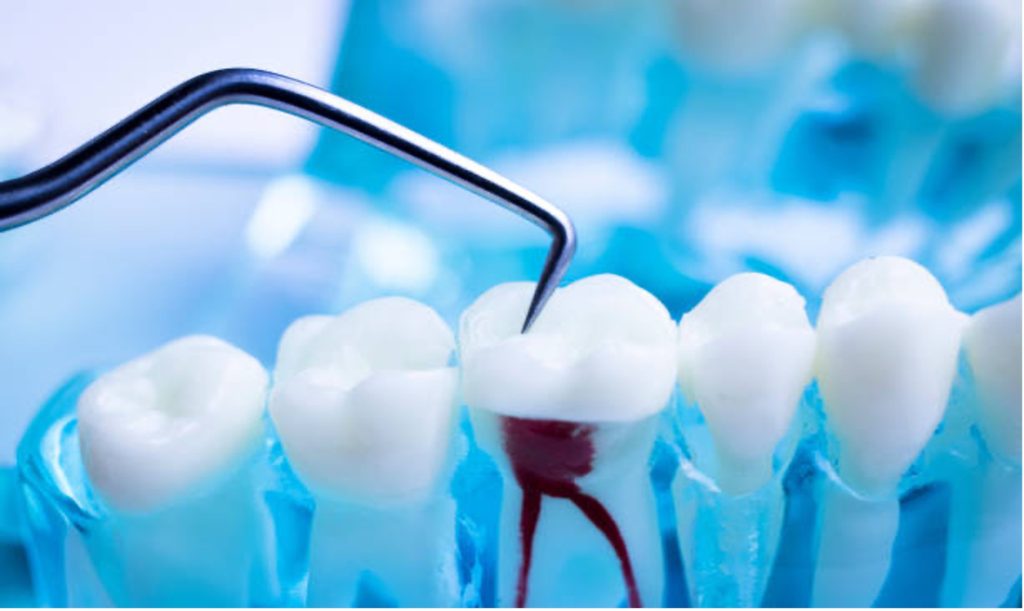A root canal may seem like a scary procedure, but it is actually a very common and routine dental treatment. If you are experiencing pain or discomfort in your teeth, it may be due to a problem with the roots of your teeth. A root canal can help relieve that pain and restore your oral health.
But even though root canals are a necessary dental treatment, the thought of them still makes many people cringe. So, what exactly is a root canal? And more importantly, when and how is a root canal performed?
Here is what you need to know:
What is a root canal?
The term “root canal” can refer to the natural cavity within the root of a tooth. It can also refer to the dental procedure used to treat an infection or inflammation in the root canal.
However, generally speaking, a root canal is a dental procedure that is used to treat problems with the roots of your teeth. During a root canal procedure, the infected or inflamed tissue is removed from the root canal, and the area is cleaned and sealed. This helps to protect the tooth from further damage and infection.
When is a root canal needed?
The most common reason for needing a root canal is when the nerve of your tooth becomes infected. This can happen as a result of tooth decay, an injury to your tooth, or other factors.
When the nerve of your tooth becomes infected, it can cause a lot of pain and discomfort. A root canal may be needed if the tooth is:
- Inflamed
- Decayed
- Damaged
- Cracked
If you have an infection or inflammation in the root canal, it is important to treat it as soon as possible. If left untreated, the infection can spread to other body parts and lead to more serious problems.
How is a root canal performed?
Before starting your root canal, your dentist will need to take some dental X-rays of the tooth that is causing you pain. This helps them understand how much damage there is and if a root canal is the best treatment option for you. Here are all the steps that will be completed during your root canal procedure:
- Numbing the area: First, the infected tooth and surrounding gums will be numbed with local anesthesia. However, if you have dental anxiety, your dentist may also recommend sedatives such as nitrous oxide, oral sedatives, or intravenous (IV) sedation to help you relax.
- Dental dam placement: A dental dam is a thin sheet of latex or rubber that is placed over your tooth. This helps to isolate the tooth and keep it clean during the procedure.
- Incision: Once the anesthesia has taken effect, your dentist will use a small drill to make an opening in your tooth. This opening gives them access to the root canal.
- Cleaning the root canal: Once the opening has been made, your dentist will use special instruments to clean out the infected or inflamed tissue from the root canal. They will also shape and enlarge the root canal so that it can be filled.
- Filling the root canal: After the root canal has been cleaned and shaped, it will be filled with a rubber-like material called gutta-percha. A temporary filling will also be placed over the opening in your tooth to protect it until your permanent restoration can be placed.
- Final restoration: Once the root canal has been filled, you will need to have a crown or other type of dental restoration placed on the tooth. This helps to protect the tooth and restore it to its normal function.
Are root canals safe?
Root canals are a common dental procedure used to treat infections and inflammation in the root canal. They are generally safe and have a high success rate in saving the tooth. However, there is a small chance that the infection could come back. If this happens, you may need to have another root canal or have the tooth extracted.
What to do after getting a root canal?
After your root canal procedure, it is important to take care of your tooth and practice good oral hygiene. This includes brushing twice a day, flossing daily, and visiting your dentist for regular checkups and cleanings.
You may experience some discomfort after your root canal procedure. This is normal and can be managed with over-the-counter pain medication. It is also normal for your tooth to feel sensitive to hot and cold temperatures for a few weeks after the procedure.
This should go away on its own as your tooth heals. Nevertheless, if you have any concerns, be sure to contact your dentist.
Bottomline
Root canals are a very common and routine dental procedure that can help to relieve your pain, save your tooth and restore your oral health. If you are experiencing pain or discomfort in your teeth, it may be time to schedule an appointment with your dentist to see if you are in need of a root canal procedure.








